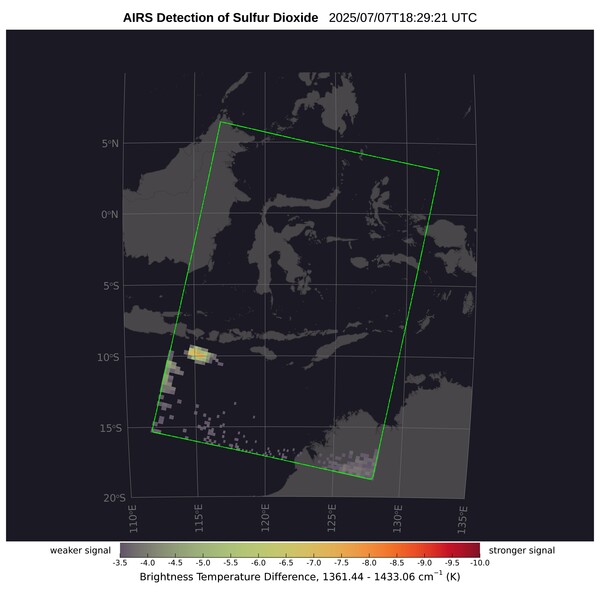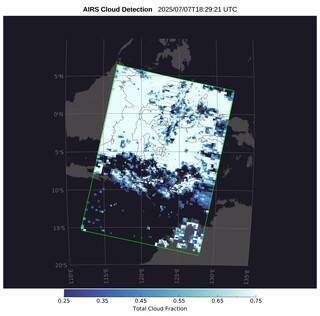About the AIRS Products
Volcanic eruptions can release large volumes of sulphur dioxide (SO2) gas and pulverized rock known as volcanic ash. The SO2 and dust browse products derived from AIRS observations can indicate the possibility of volcanic activity, but more detailed analysis is required to confirm the presence of volcanic clouds or estimate the composition and quantity of materials in the clouds.
What the measurements imply
Volcanic SO2 and ash plumes absorb the energy in infrared wavelengths of light, or radiances, passing through them in transit from the surface of the Earth to space. This absorption is controlled by the composition of a plume and quantity of the components within the plume, together with other important factors such as cloud cover, surface temperature and emissivity. We detect SO2 and ash plumes by comparing the radiance measured in spectral channels that are sensitive to SO2 or ash to the radiance measured in channels that are not sensitive.
In the case of SO2, we represent differences between the radiance in two channels as a difference in radiometric, or brightness, temperature. Larger brightness temperature differences (BTD) imply stronger SO2 absorption. In the case of ash, we represent differences between several pairs of channels as a dust score. Larger dust scores imply stronger ash absorption. It’s important to note that clouds can block the detection of the SO2 signal by the AIRS instrument.
About the data and rapid response system
These rapid response images are generated from AIRS radiance observations (Level 1B data) obtained in six-minute periods that are received within three hours of the original observation. An automated process divides each six-minute data collection into 54 separate sub-regions (each 250 km on a side and containing 225 observations) and searches for the presence of SO2 alone or a physically-contiguous combination of SO2 and dust. If either of these tests produce a positive, a plume event is declared and images are produced. Each image covers the entire six-minute data granule.






